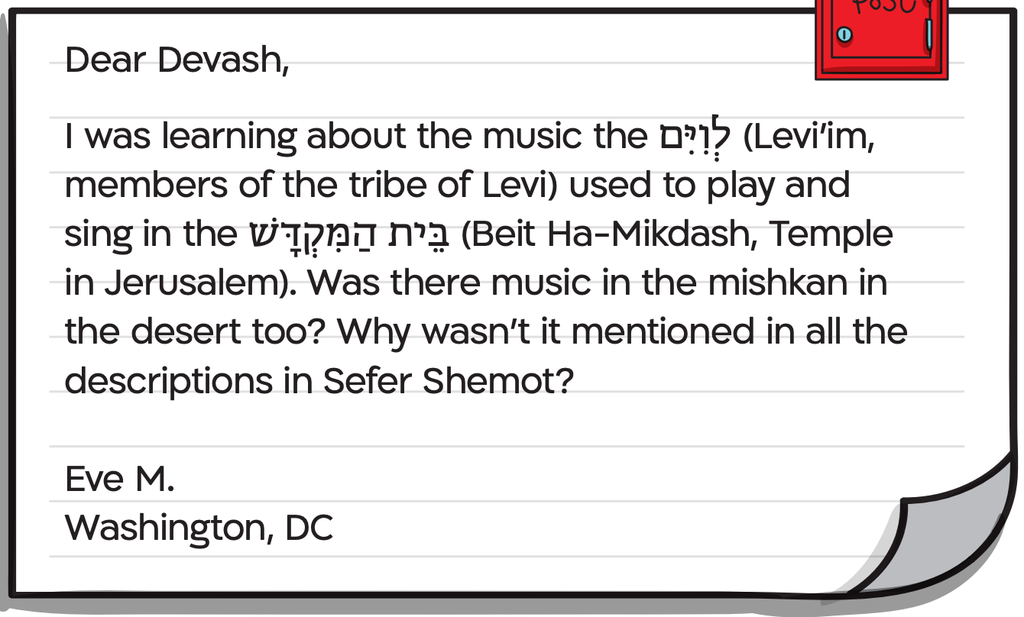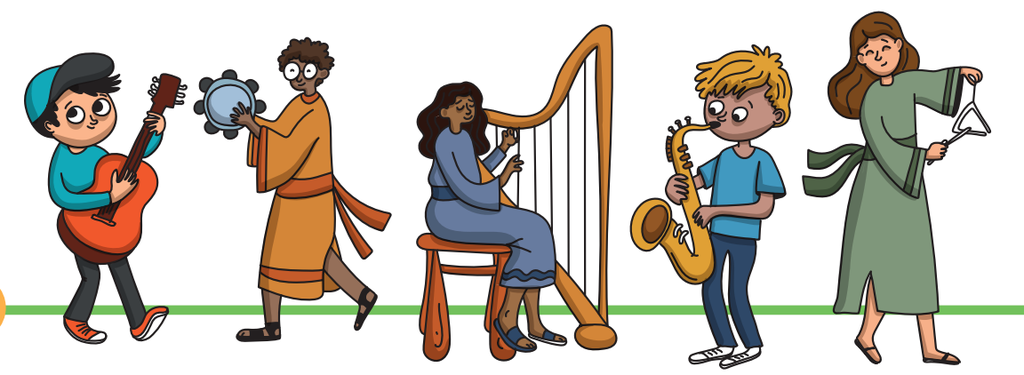Ilustration Credit: Elad Lifshitz, Dov Abramson Studio

Send us your thoughts or questions from learning the parashah. We’ll write back to you, and some will get published in future issues of Devash! Write to us at [email protected].

Hi Eve!
What a great question, with two important parts.
We can answer your second question first. While it’s true that we learn how to build the mishkan in Sefer Shemot, there are lots of other things about the mishkan that we only learn later in Sefer Vayikra and Sefer Bemidbar. For example, Sefer Vayikra describes the mishkan’s grand opening (see Devash on Parashat Tzav) and Bemidbar lists all of the קָרְבָּנוֹת (korbanot, sacrifices) for holidays. So it’s not so surprising to find important information about the mishkan not in Sefer Shemot.
Now to your first question. The Torah and Tanakh don’t mention music in the mishkan in an obvious way.
But there are other sources on this topic!
In Bemidbar 4:47 the Torah tells us that in the mishkan Levi’im did עֲבֹדַת עֲבֹדָה (avodat avodah, the work of the work). What does this mean? Rashi says that this is the music the Levi’im would play—even in the mishkan!
Actually, our parashah also provides some information that relates to the songs of the Levi’im. In Shelah, we read about different amounts of wine that were poured on the מִזְבֵּחַ (mizbei’ah, altar) along with the different korbanot in the mishkan (Bemidbar 15:5-12). There is a saying in the Talmud (from Rabbi Yohanan, Arakhin 11a) that the music of the Levi’im always went along with the ritual of wine libation (that’s a fancy way to say pouring). Therefore, if there was wine in the mishkan, there must have also been song.
And that’s where you can find music in the mishkan!

-------------------
-------------------




